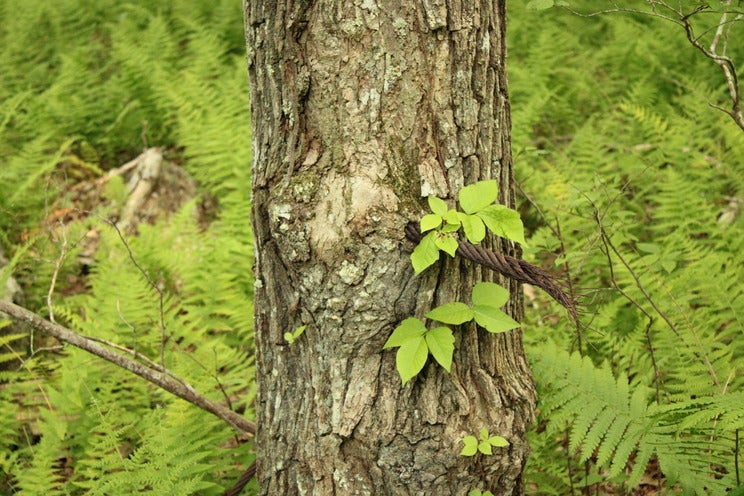The old adage “leaves of three, let it be” is often told as a warning against poison ivy, but it falls short of teaching what to actually look for. Wild strawberries, red clover, and other harmless species also have leaves in groups of three. Fortunately, poison ivy has other signs to set it apart.
- The leaves are teardrop-shaped, usually 1 to 3 inches long.
- Leaves sometimes have a glossy or shiny appearance. Urushiol oil coats the leaves, and can cause an itchy, red rash if it comes in contact with skin.
- The foliage is usually green in spring and summer, and partially red in fall.

Poison ivy has an impressive lifespan. Some plants can live for decades. It typically appears as a vine that climbs trees or grows along the ground. Sometimes it can even grow large enough to resemble bushes or trees.
Staying Safe
Knowing what to look for helps to avoid poison ivy. The best way to stay safe is to stay on the trails, and avoid touching or handling unfamiliar plants. If contact with skin occurs, wash the area well with soap and water. Wearing long pants or long sleeves is another way to prevent contact with skin. The oil can stick to clothing, though, so staying on established paths is still important.
Ecological Value
Humans are the only animal with a known allergen to poison ivy. The plant can be a nuisance to humans, but it serves as a valuable food source for wildlife. Birds, deer, bears, and muskrats are all known to consume the berries. The berries grow in the summer, but stay on the plants for several months into winter. When food is scarce, they may provide vital nutrition to animals. To learn more, visit this useful page from the Georgia Wildlife Resources Division: A Wildlife Food Plant We Love to Hate.
